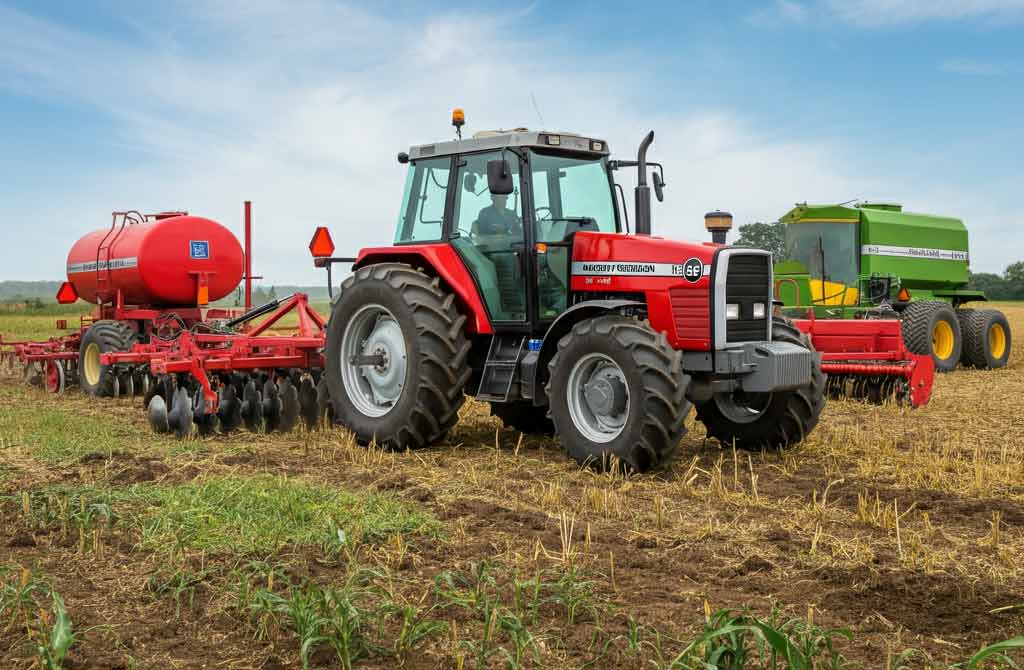Modern farming in Zimbabwe is built on the backbone of efficient, reliable implements that increase productivity and reduce manual labor. As Zimbabwe’s agricultural sector grows more sophisticated, these tools have become essential. Here’s a concise guide to the major farm implements, their specifications, and how they’re shaping Zimbabwean farms.
Hammer Mill
A hammer mill is indispensable on Zimbabwean farms for its role in grain processing. Consisting of a spinning shaft fitted with multiple hammers and a screen, it crushes maize, millet, and sorghum. A typical model includes 16–32 hammers that pulverize grain against a mesh sieve delivering finely ground meal for food or livestock feed. With throughput as high as 500–1,200 kg per hour, hammer mills save hours of manual grinding, improving both speed and consistency.
Disc Plough
The disc plough is essential for initial land preparation. Most disc ploughs in Zimbabwe feature 2–4 large steel discs, each about 660 – 710 mm in diameter. Mounted on heavy frames, the discs cut and turn the soil, break up tough sod, and bury weeds. This tool creates well-aerated seedbeds, especially important in hard, dry soils common in the region. The result is improved moisture retention and better root development for crops like maize and tobacco.
Mould Board Plough
Designed for deep, clean tillage, the mould board plough uses one to three curved, polished blades to slice and invert soil. Each mould board usually measuring 30–40 cm lifts and flips soil, burying crop residues and weeds. This makes it ideal for lighter, weed-infested land and crops like wheat. Farmers benefit from superior weed control and enhanced soil structure, which helps achieve uniform, healthy crops.
Disc Harrow
After ploughing, the disc harrow refines the seedbed. It comes with sets of 12–24 round, notched, or plain discs (each about 450–560 mm across), attached in gangs at an angle. As the machine rolls, each disc shatters clods, mixes organic matter, and levels the soil. Disc harrows make it easier to plant small grains and legumes, providing better soil texture and optimum seed-to-soil contact, which leads to even germination across the field.
Water Bowser
Water bowsers are mobile tanks, with capacities ranging from 1,000 to over 5,000 liters. Mounted on trailers, these implements distribute water to far-flung fields or livestock. This ability is crucial in Zimbabwe’s dry spells, enabling irrigation for crops like tomatoes and leafy greens and ensuring livestock have reliable access to water, boosting health and productivity.
Hay Baler
Hay balers, available in round and square configurations, compact hay into bales for easy handling and storage. A standard square baler produces bales about 1 m long and weighing 20–30 kg, while round balers make heavier, weather-resistant bales. This helps Zimbabwean livestock farmers store and transport feed efficiently, keeping animals nourished even during dry seasons when fresh pasture is scarce.
Maize Shelling Machine
Maize shellers in Zimbabwe can process up to 1,000 kg per hour using rotating drums or beaters to separate kernels from cobs. This mechanization replaces manual shelling, slashing processing time and reducing wear on workers. Clean, intact kernels mean less waste and better market prices, streamlining post-harvest operations.
The adoption of these farm implements has been transformative for Zimbabwean agriculture. Mechanization has reduced manual labor, lowered costs, and allowed farmers to work larger plots. Better tillage and efficient post-harvest handling mean higher yields, more consistent quality, and improved food security for the nation.
Tags: farming, zimbabwe

